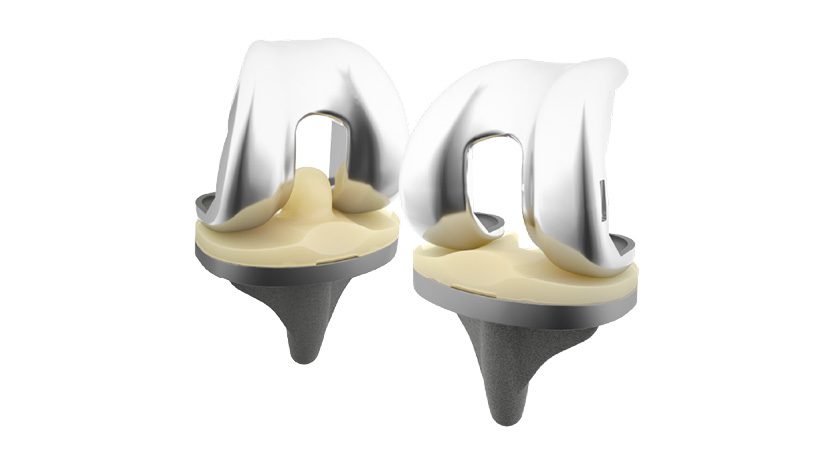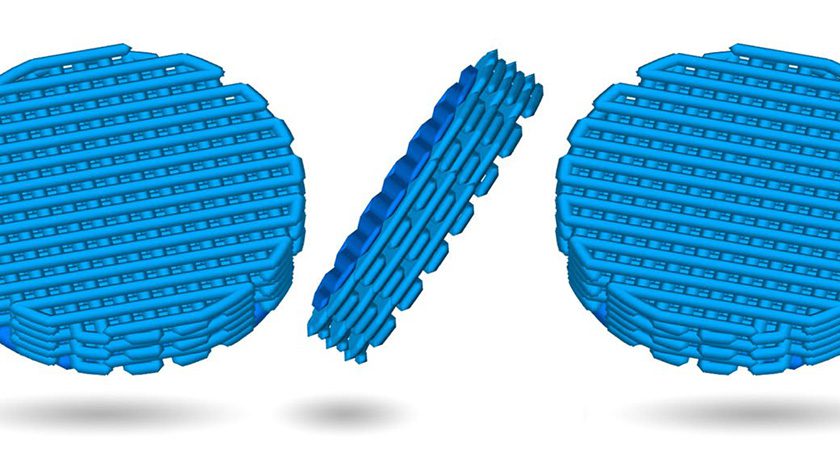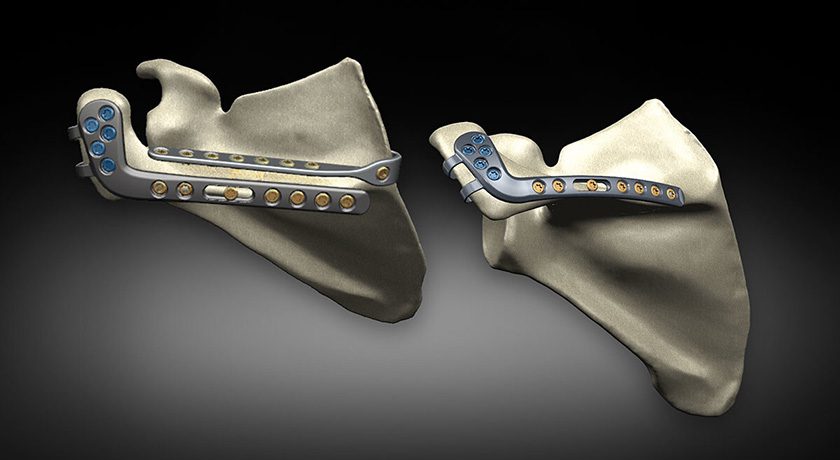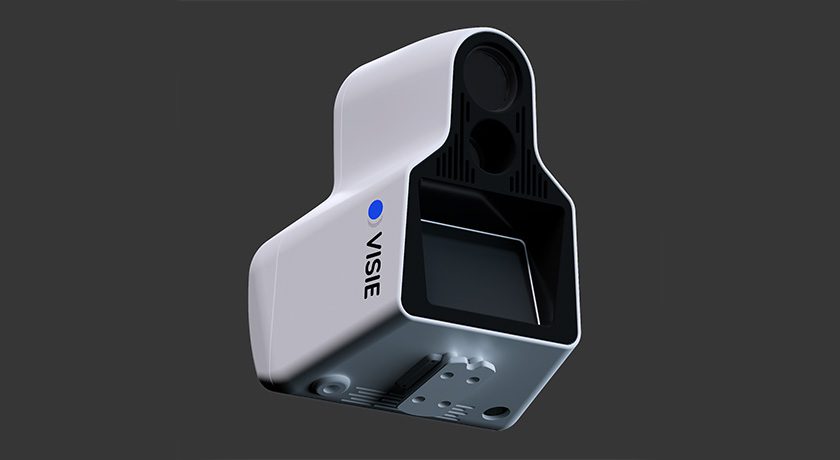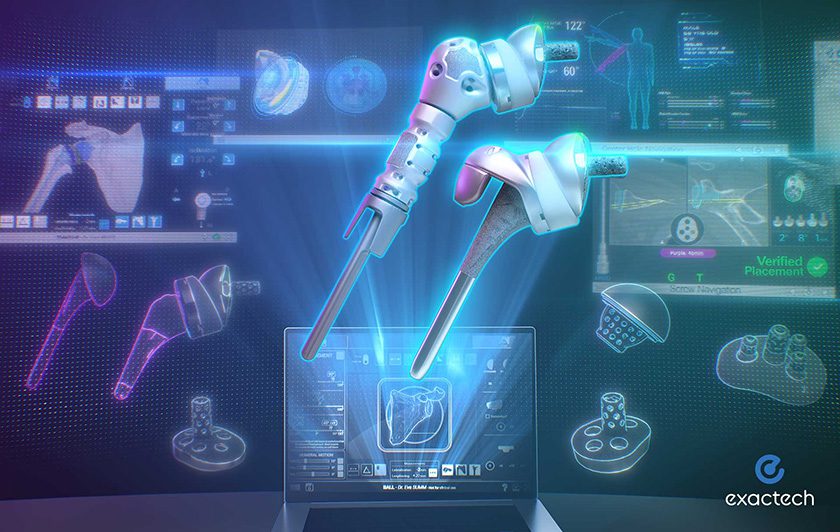

 Copy to clipboard
Copy to clipboard 
Exactech announced study results that show positive two-year outcomes for the Equinoxe Humeral Reconstruction Prosthesis (HRP), a solution for extensive proximal humerus bone loss.
The retrospective study is the largest of its kind to evaluate clinical outcomes of shoulder arthroplasty patients with proximal humeral bone loss, which can be challenging to treat because the loss of humeral bone compromises implant fixation and joint stability. The results of this new two-year minimum study using the HRP demonstrated significant improvements in range of motion (ROM), pain and outcome scores (PROMs), with no cases of humeral component loosening.
Released in 2015, the HRP was designed to be hyper-modular, with multiple sizes of proximal bodies, mid-shaft extension segments with soft tissue attachments, and distal humeral stems to improve muscle tensioning and soft tissue fixation. These multiple implant options allow surgeons to reconstruct the length of the humeral resection from 50 to 222mm. Anatomically shaped proximal bodies restore locations of rotator cuff muscle insertions and increase deltoid wrapping and moment arms to improve biomechanical advantage and stability. A key HRP design feature is the distal stem collar, in 17 sizes, which connects to the outside of the humeral bone to supplement the humeral stem fixation and provide additional rotational stability.
Chris Roche, Sr. Vice President, Extremities, said, “With the release of the HRP, we expanded the indications of reverse shoulder arthroplasty to treat patients with proximal humeral bone loss and implemented several patented design features, with the goal of achieving humeral fixation and joint stability in the most challenging of cases. While previous bench testing demonstrated that these design features would improve humeral fixation, the results of this two-year minimum multi-center clinical study demonstrating zero occurrence of humeral loosening provides a definitive validation of our design goals.”
Source: Exactech
Exactech announced study results that show positive two-year outcomes for the Equinoxe Humeral Reconstruction Prosthesis (HRP), a solution for extensive proximal humerus bone loss.
The retrospective study is the largest of its kind to evaluate clinical outcomes of shoulder arthroplasty patients with proximal humeral bone loss, which can be...
Exactech announced study results that show positive two-year outcomes for the Equinoxe Humeral Reconstruction Prosthesis (HRP), a solution for extensive proximal humerus bone loss.
The retrospective study is the largest of its kind to evaluate clinical outcomes of shoulder arthroplasty patients with proximal humeral bone loss, which can be challenging to treat because the loss of humeral bone compromises implant fixation and joint stability. The results of this new two-year minimum study using the HRP demonstrated significant improvements in range of motion (ROM), pain and outcome scores (PROMs), with no cases of humeral component loosening.
Released in 2015, the HRP was designed to be hyper-modular, with multiple sizes of proximal bodies, mid-shaft extension segments with soft tissue attachments, and distal humeral stems to improve muscle tensioning and soft tissue fixation. These multiple implant options allow surgeons to reconstruct the length of the humeral resection from 50 to 222mm. Anatomically shaped proximal bodies restore locations of rotator cuff muscle insertions and increase deltoid wrapping and moment arms to improve biomechanical advantage and stability. A key HRP design feature is the distal stem collar, in 17 sizes, which connects to the outside of the humeral bone to supplement the humeral stem fixation and provide additional rotational stability.
Chris Roche, Sr. Vice President, Extremities, said, “With the release of the HRP, we expanded the indications of reverse shoulder arthroplasty to treat patients with proximal humeral bone loss and implemented several patented design features, with the goal of achieving humeral fixation and joint stability in the most challenging of cases. While previous bench testing demonstrated that these design features would improve humeral fixation, the results of this two-year minimum multi-center clinical study demonstrating zero occurrence of humeral loosening provides a definitive validation of our design goals.”
Source: Exactech

You are out of free articles for this month
Subscribe as a Guest for $0 and unlock a total of 5 articles per month.
You are out of five articles for this month
Subscribe as an Executive Member for access to unlimited articles, THE ORTHOPAEDIC INDUSTRY ANNUAL REPORT and more.
JV
Julie Vetalice is ORTHOWORLD's Editorial Assistant. She has covered the orthopedic industry for over 20 years, having joined the company in 1999.


